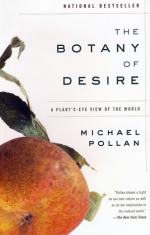
|
| Name: _________________________ | Period: ___________________ |
This test consists of 15 multiple choice questions and 5 short answer questions.
Multiple Choice Questions
1. What is a good place to experiment and a place to try out new plants and techniques without having to risk a lot?
(a) Flower pot.
(b) School.
(c) Garden.
(d) Scientific lab.
2. While the potatoes were unable to provide all of the nutrients a person might need, they could get the Vitamin A from ________.
(a) The sun.
(b) Milk.
(c) Peppers.
(d) Lettuce.
3. _________ is one example of a chemical which was tested before it was used, only to find that later on it affected other ecosystems.
(a) Neem oil.
(b) Marigolds.
(c) DDT.
(d) Bt.
4. What is Pollan not allowed to do with the NewLeaf potatoes at the end of the year, according to the law?
(a) Hide them.
(b) Eat them.
(c) Sell them.
(d) Replant them.
5. According to the book, some counter strategies to these toxins include all of the following except ______.
(a) Feeding strategies that minimize ingestion.
(b) Drying plants in the sun.
(c) Digestive processes that detoxify.
(d) Heightened memory.
6. The books suggests that all of the following are successful defenses plants have adopted except _______.
(a) Death-dealing toxins.
(b) Confound.
(c) Repel.
(d) Disable.
7. Tukano Indians in the Amazon noticed Jaguars eating a vine, which was atypical for them and helped the Indians discover ______.
(a) Mistletoe.
(b) Cannabis.
(c) Yaje.
(d) Datura.
8. Until the mid-1970s, most of the marijuana in America was grown in _______ and was often sprayed with a pesticide paraquat.
(a) Mexico.
(b) Canada.
(c) Peru.
(d) America.
9. Goats are associated with the discovery of _____, when it was observed they became frisky after eating the red berries.
(a) Tea.
(b) Mistletoe.
(c) Coffee.
(d) Chocolate.
10. For the first time in history, the __________ of a plant is being domesticated by humans and by the scientific changes of humans.
(a) Taste.
(b) Genome.
(c) Color.
(d) Chemical structure.
11. Pollan suggests that drugs have both positive and negative qualities. The wine of _______ was both a scourge and a blessing.
(a) Dionysus.
(b) Apollo.
(c) Venus.
(d) Zeus.
12. The book suggests that gardens used to be planted as a kind of living _____ that cared little for aesthetics.
(a) Art form.
(b) Display of beauty.
(c) Mandala.
(d) Apothecary.
13. According to the book, drugs that alter the user's perception of time and space are taboo because they disrupt the _______.
(a) Verbal order.
(b) Religious order.
(c) Political order.
(d) Social order.
14. ________, Pollan says, is the theme which unifies the questions being raised in agricultural biotechnology.
(a) Uncertainty.
(b) Appeal.
(c) Truth.
(d) Effectiveness.
15. Farmers who plant Bt crops must leave a certain portion of their land for non-Bt crops to provide a ________ for the bugs.
(a) Refuge.
(b) School.
(c) Trap.
(d) Study.
Short Answer Questions
1. The reasons why potatoes did not become popular in Europe at first was because they were thought to cause _________ and immorality.
2. ____________ were the ones who seized land from the Irish, causing them to have meager plots of arable land on which to grow.
3. According to the book, the human penchant for drugs has allowed people to trip the brain's ______ system washing the brain in 'feel good' chemicals.
4. Into what kind of plant have plant breeders inserted a gene from a firefly, making the plants glow, although for no apparent reason, according to Pollan?
5. In the book, Pollan was almost caught by the police for growing a couple of ______ plants on his property.
|
This section contains 520 words (approx. 2 pages at 300 words per page) |

|




